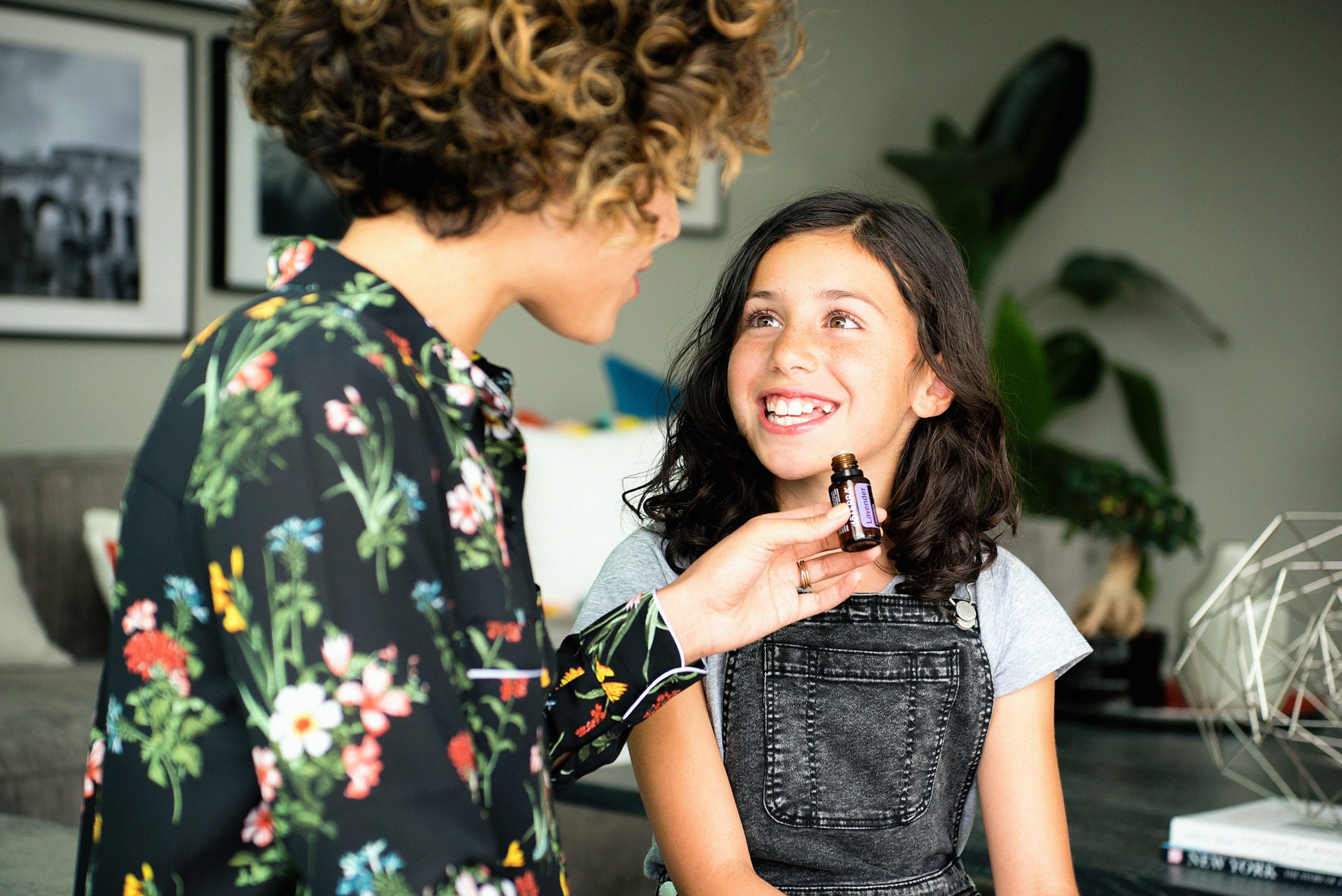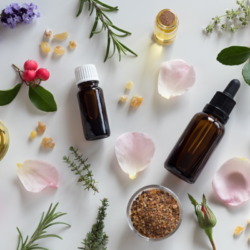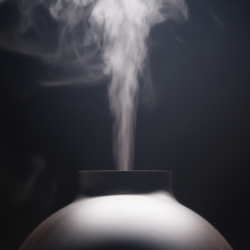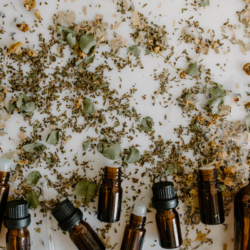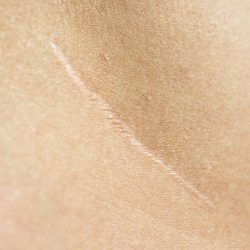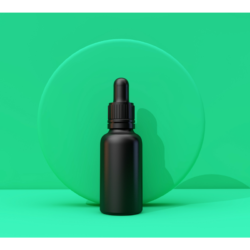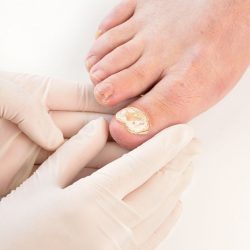As a general rule, essential oils are not recommended for children under the age of 6. However, for younger children, we recommend using hydrolats, vegetable oils or oily macerates to treat everyday ailments.
Top 3 essential oils that can be used for my child over the age of 6
Marjoram, neroli and chamomile are three essential oils suitable for children aged 6 and over, each with specific properties and precautions for use, particularly for pregnant or breast-feeding women and young children.
Marjoram essential oil:
This essential oil is reputed to be tonic and calming, meaning it energises and relaxes at the same time. It provides the means to face difficulties in a peaceful, relaxed way. A physical tonic, marjoram awakens the desire to act and gives impetus, but does not invite sleep (it tones the adrenals and thyroid).
A neurotonic and general rebalancer of all forms of excess, it is a powerful pƩ oil. Its analgesic and anti-inflammatory properties are linked to the inhibition of pro-inflammatory cytokines as well as a diuretic activity.
A gastric stimulant and appetite regulator, it is also anti-asthenic and regulates the respiratory tract. Marjoram essential oil is also an antispasmodic, antimicrobial (demonstrated against staphylococci, Pseudomonas aeruginosa, Escherichia coli and Propionobacterium acnes) and antifungal (demonstrated against Candida albicans, Trichophytons involved in athlete’s foot or nail fungus, Microsporum responsible for ringworm and Pityriasis versicolor, yeasts involved in depigmentation) and antiviral (demonstrated against herpes).
A hypotensive and vasoconstrictor, marjoram is also a hepatostimulant, and its cortison-like action (stimulating the pituitary-cortical-adrenal axis) makes it useful in prolonged inflammatory conditions.
The probable action of its volatile compounds on olfactory receptors in the nasal mucosa induces a nervous impulse in the olfactory bulb, then in the hippocampus, linked to learning and memory functions.
The added benefit of this oil is that it also protects against the renal and hepatic toxicity of lead acetate.
Like all essential oils, Marjoram is no exception to the rule on precautions for use:
- Contraindicated in pregnant or breast-feeding women and children under 7 years of age
- Neurotoxic in high doses
- Do not combine with cortisone, risk of drug interaction, ask your pharmacist for advice
- Dermocaustic, skin irritation possible in pure form
Neroli essential oil:
This essential oil combats maladjustment to situations, due to hypersensitivity. For example, people who are affected by everything: we don’t dare say anything any more, because they are hyper-reactive, hyper-stressed (complementary essential oil of Chaemelum nobile).
Neroli is antidepressant and “re-tunes”, and has neurotonic, rebalancing, tranquillising and antispasmodic properties.
Lymphotonic and decongestant, neroli oil also stimulates digestive microcirculation. Anti-infectious (on Pseudomonas aeruginosa) and antifungal, it is also astringent and skin tonic.
Like all essential oils, Neroli must be used with care:
- Do not use in combination with cortisone, as there is a risk of drug interaction
- Do not use over a prolonged period, as this may cause the pituitary-adrenal axis to rest, leading to acute adrenal insufficiency when you stop taking the essential oil
- Avoid applying the essential oil in the evening (or before any period of rest)
- Dermocaustic, revulsive action on the skin in its pure state and aggressive for mucous membranes (redness, irritation, pruritus), not to be used pure, dilution required before use
- Enzyme inhibitor, risk of drug interactions(geraniol), ask your pharmacist for advice
- Beware of possible gynaecomastitising effects with prolonged use, linalool and linalyl acetate show anti-androgenic activity and low estrogenic activity by binding to oestrogen receptors. As linalool and linalyl acetate inhibit testosterone production, these molecules should be avoided as endocrine disruptors in males over the long term
- Contraindicated in children under 8 years of age
- Caution in cases of renal insufficiency per os
- Contraindicated in pregnant or breast-feeding women ( limonene induces uterine contractions)
- Contraindicated in epileptics or people with a history of convulsions
Chamomile essential oil:
Chamomile essential oil is an antispasmodic (isobutyl angelate has a powerful action against spasms) and calms the central nervous system when massaged. A preanaesthetic, it is also anti-inflammatory and analgesic (one of the most analgesic in dentistry, an action undoubtedly enhanced by the traces of acids it contains), to be combined with Hypericum perforatum.
An anti-parasitic against intestinal parasites such as lamblias, hookworms and protozoa of the genus giarda, chamomile is also sedative and anxiolytic (isobutyl angelate has been shown to have a calming and de-stressing action). It is the richest essential oil in esters, which gives it relaxing and antidepressant properties (isobutyl angelate is thought to be an antidepressant).
As a healing agent, it stimulates fibroblasts and collagen formation. The hydrosol is used for oral and ocular hygiene.
As a digestive tonic, it has carminative and cholagogue properties.
As with all essential oils, however, Chamomile has to be used with care:
- Not recommended for pregnant or breast-feeding women
- Not recommended for children under 8 years of age
- Possible drug interactions, inhibition of CYP3A5 in vitro, and of CYP3A4, CYP2D9, CYP2C9, ask your pharmacist for advice
Can essential oils be used in a child’s bedroom?
Yes, you can use essential oils in your child’s bedroom to promote restful sleep and a soothing atmosphere. However, it’s important to take precautions, use oils that are suitable for children and consult a health professional for personalised advice.
Conclusion:
Aromatherapy is certainly a natural medicine, but it is far from being the “soft medicine” it is usually described as. For aromatherapist Jean-Pierre Willem, ” It’s not alternative medicine. So it’s not possible to self-medicate “. Just one teaspoon of cedar essential oil, for example, can be enough to cause death. It’s best to avoid gambling with your children’s health by using certain essential oils without knowing their molecular content and the appropriate doses. If in doubt, don’t hesitate to ask a health professional for advice.
Medical literature and clinical trials:
- Charai, M., Mosaddak, M., & Faid, M. (1996). Chemical composition and antimicrobial activities of two aromatic plants: Origanum majorana L. and O. compactum Benth. Journal of Essential Oil Research
- El-Ashmawy, I. M., El-Nahas, A. F., & Salama, O. M. (2005). Protective effect of volatile oil, alcoholic and aqueous extracts of Origanum majorana on lead acetate toxicity in mice. Basic & clinical pharmacology & toxicology
- Azanchi T, car Shafaroodi H, Asgarpanah J. Anticonvulsant activity of Citrus aurantium blossom essential oil (neroli): involvment of the GABAergic system. Nat Prod Commun. 2014
- Ammar AH, Bouajila J, Lebrihi A, Mathieu F, Romdhane M, Zagrouba F. Chemical composition and in vitro antimicrobial and antioxidant activities of Citrus aurantium l. flowers essential oil (Neroli oil). Pak J Biol Sci. 2012
- Wilkinson S, Aldridge J, Salmon I, Cain E, Wilson B. An evaluation of aromatherapy massage in palliative car e. Palliat Med. 1999
- Aremu, Olukayode & Tata, Charlotte & Sewani-Rusike, Constance & Oyedeji, Adebola & Oyedeji, Opeoluwa & Nkeh-Chungag, Benedicta. (2018). Phytochemical composition, and analgesic and car anti-inflammatory properties of essential oil of Chamaemelum nobile (Asteraceae L All) in rodents. Tropical Journal of Pharmaceutical Research

